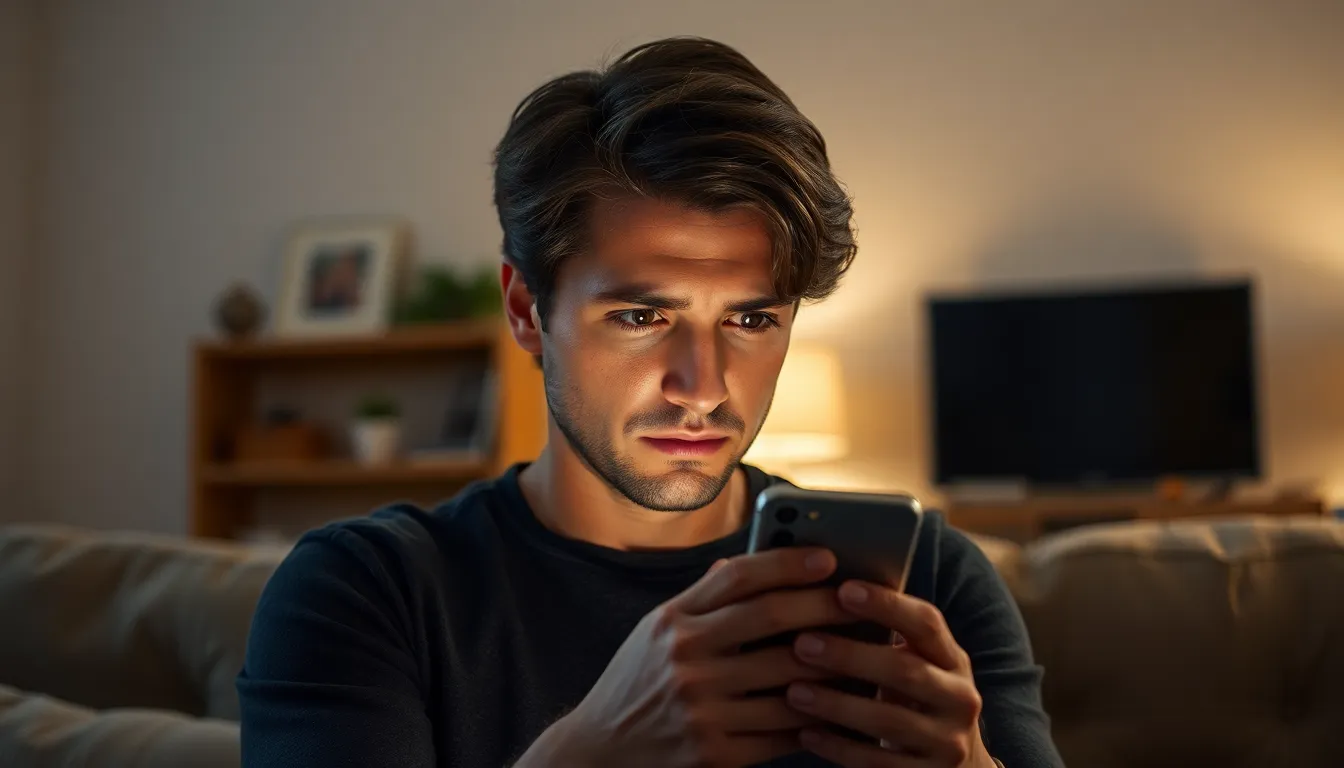In a world where privacy feels like a luxury, the thought of someone eavesdropping on your conversations can be downright unsettling. Imagine your iPhone spilling your secrets like a gossiping friend at a party. But how can you tell if your phone’s been tapped?
Table of Contents
ToggleSigns Your iPhone May Be Tapped
Detecting if an iPhone is tapped involves noticing specific signs. Look for these indicators that point toward potential eavesdropping.
Unusual Background Noise
Unusual background noises during calls can signal issues with an iPhone. Any static or echoes might suggest unauthorized access. Users often report hearing strange clicking sounds or voices faintly in the background. Such disturbances during a conversation often raise red flags, indicating a possible tap. Remaining alert to these inconsistencies helps identify potential privacy violations.
Sudden Battery Drain
Sudden battery drain may indicate a compromised iPhone. Devices naturally use battery power for apps and connectivity. A significant drop in battery life without apparent reason can suggest hidden surveillance apps running in the background. Users might notice rapid depletions even with minimal phone usage. Frequent charging or needing to replace the battery can also hint at unwanted activity, highlighting the importance of monitoring battery performance.
Checking Your Settings

Monitoring settings can reveal potential issues related to phone security. Understanding these settings helps in identifying any unauthorized access.
Reviewing Installed Apps
Investigating installed apps is crucial to maintaining privacy. Users must look for unfamiliar or suspicious applications on their iPhones. Any app that seems unnecessary could indicate tampering. Checking the permissions granted to these apps is also important. Apps that request access to the microphone or camera without a clear purpose may raise red flags. Removing such apps can help safeguard privacy. Regularly updating the app list ensures that only the necessary applications remain installed.
Inspecting Call History
Analyzing call history provides insight into unusual activity. Users should check for missed calls or dialed numbers that they do not recognize. Any entry that appears unexpectedly may hint at unauthorized monitoring. Reviewing outgoing calls closely can highlight consistent access to private conversations. Keeping track of call patterns is vital; changes in call frequency or odd behavior can be telling. If anything seems out of place, taking further action may be essential.
Using Third-Party Apps
Third-party apps can enhance security for iPhone users by detecting potential taps or spyware. Many apps specialize in monitoring unauthorized access and ensuring privacy.
Recommended Security Apps
Look for security apps like Cura, iVerify, and Lookout, which offer tools for identifying suspicious activity. Apps with features such as privacy scanning, malware detection, and system audits provide essential insights. These selected apps often include notifications about unusual behaviors that can alert users to potential eavesdropping. Using reliable security apps helps maintain a secure digital environment. Regularly updating these apps ensures optimal protection against the latest threats.
Evaluating App Reliability
Assessing an app’s reliability is crucial for maintaining iPhone security. Start by researching reviews on platforms like the App Store to gauge user experiences. Trustworthy apps typically have high ratings and positive feedback from users. Additionally, check the credentials of the developers behind the app; reputable companies often have a history of prioritizing user security. Examine the permissions each app requests, too; unnecessary access to personal data raises red flags. Prioritizing apps with transparent policies and clear terms of service adds an extra layer of safety to your device.
Enhancing Your iPhone Security
Strengthening iPhone security involves several practical steps. Users should remain proactive to safeguard their devices against potential threats.
Updating Your Software
Keeping software updated helps protect against vulnerabilities. Apple regularly releases updates that patch security flaws and enhance device functionality. Users must check for and install these updates promptly, as outdated software may expose devices to risks. Enabling automatic updates ensures that security patches install without delay. Additionally, reviewing system settings for the latest version can provide peace of mind concerning security. Users often overlook this step, yet it’s crucial for preventing unauthorized access.
Enabling Two-Factor Authentication
Activating two-factor authentication (2FA) adds an extra security layer. This process requires users to verify their identity using a second method, typically a code sent to another device. This means that even if someone grabs a password, access remains blocked without the additional verification step. Setting up 2FA on Apple ID accounts is straightforward and significantly enhances account protection. Users often find this extra measure beneficial, as it prevents unauthorized logins, even if passwords are compromised. Enforcing strong passwords alongside 2FA provides comprehensive security for the device.
Staying aware of potential privacy invasions is crucial in today’s digital age. By recognizing the signs of a tapped iPhone such as unusual call sounds and unexpected battery drain, users can take proactive steps to protect their personal information. Regularly reviewing app permissions and installed applications helps maintain device security.
Utilizing trusted security apps can further enhance protection against unauthorized access. Keeping software updated and enabling two-factor authentication adds vital layers of security. By remaining vigilant and informed, users can safeguard their privacy and enjoy peace of mind in an increasingly connected world.


